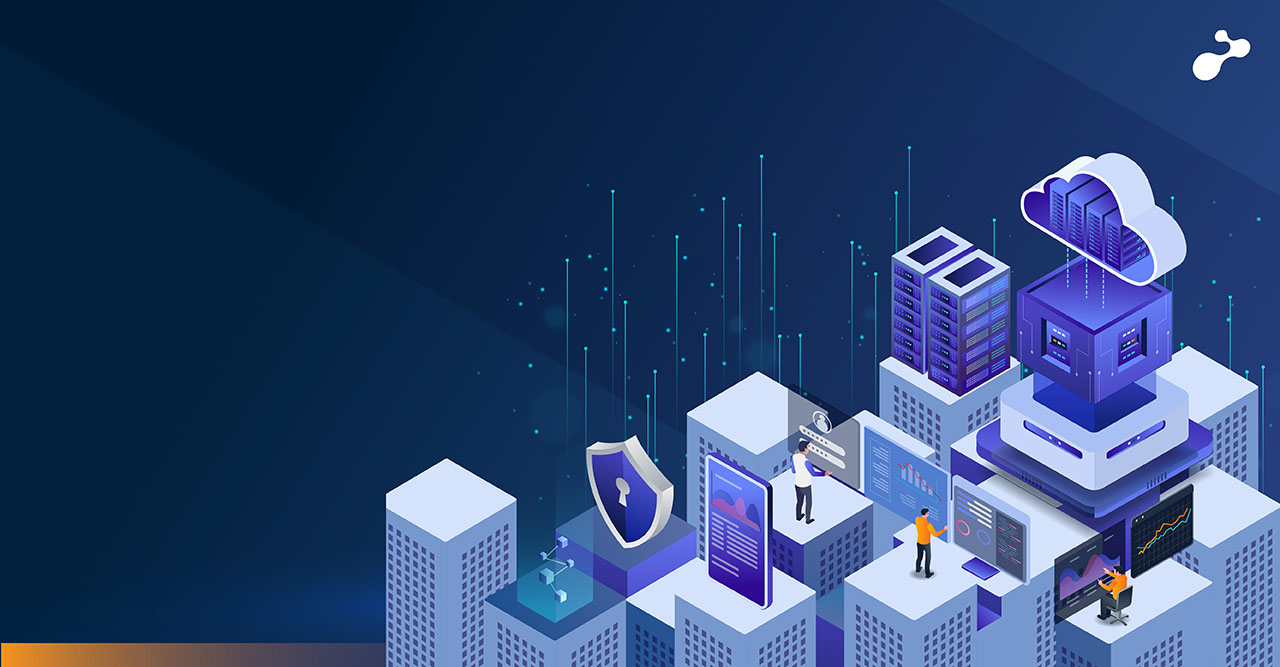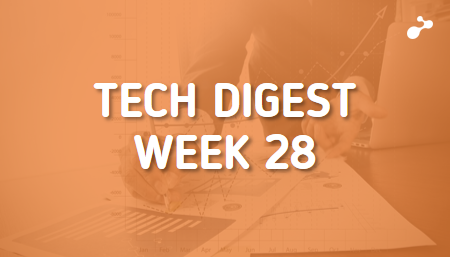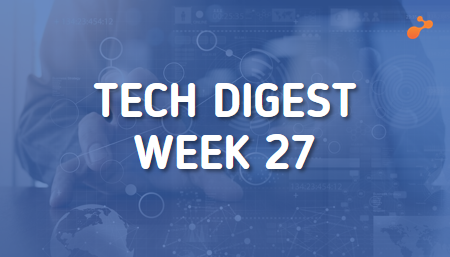Data has replaced oil as the world’s most valuable resource. It has proved its potential to turn the fortunes of organizations world over.
Data fuels some of the biggest technology advancements and have shown significant economic potential. Most leading organizations today have come to understand the importance of data. This data if used rightly can talk and offer the best business insights.
At present, we are in between the conflux of digital and post-digital era. Every organization doing digital is implementing some form of technology driven by data. Artificial Intelligence (AI) & Machine Learning (ML) which is disrupting business and commerce as we see it today are among them.
Practically every industry has something to gain from AI and ML.
We, at e-Zest are focused on solving some of the biggest challenges that are faced by our customers with their data at hand. Our data science capacities help in probing deeper insights for a strategic decision-making process that makes their data work for their business.
Our data engineers, app developers and data scientists leverage Big Data technologies & machine learning algorithms to spot patterns that offer our clients the critical competitive advantage.
We embed the tools needed for AI building blocks that add the human like capabilities of sight, language, and conversation to their applications.
Our AI capabilities include -
- Virtual Assistants
- Cognitive Services
- Document Cognitive Services
- Machine Learning Modelling Services
1. Virtual Assistants
Virtual assistants can assist people with basic tasks using natural language processing. Either text or voice can trigger an action and our intelligent personal assistants can go online or through the database provided, search for an answer to a user’s question.
Chatbot:
Chatbot is a virtual companion that communicates through text messages, integrates into websites or applications and provides a personalised experience for users. Text is the main way to get assistance. It simulates a quick and efficient conversation with users and imitates human conversations for solving various tasks.
At e-Zest we have built FAQ chatbot using Google Dialogflow. Also, our own framework helps to build chatbots which can work offline as well as provide analytics of chatbot conversations.
Voice Bot:
Through speech recognition and natural language understanding technology, users use their voices naturally to interact with content, services, policies, and much more. The voice bot that we have built at e-Zest uses the Alexa skill set and lets the users access the details as it is connected to database by asking Alexa questions or making requests.
e-Receptionist/ smart visitor management system:
By using deep learning models for face and language recognition, our own virtual receptionist can greet and assist employees and visitors of the company. It is deployed as our internal project for access control and visitor management. With the employee’s data fed, it assists employees, grants them access and records the data for future use. By allowing organisations to easily identify and track employees and guests, e-receptionists has made the visitor check-in and registration process quicker than ever before.
2. Cognitive Services
The goal of cognitive services is to build applications that can see, hear, speak, understand, and even begin to reason. Cognitive services use deep learning capabilities for computer vision and sentiment evaluation.
Speech-to-text:
At e-Zest, we use speech recognition capabilities of converting audio into perfectly-accurate text. This can be used for customer support and interaction. Further text analysis using NLP techniques can help to predict things as per the business need. The customer identification process uses:
- Voice patterns
- Answers
- Call (and caller) categorization
- Demographic analysis including gender, estimated age, language, emotion, sentiment and more.
- Customer support and interaction
- Review analysis
Sentiment Analysis:
Sentiment analysis refers to mining customer opinions. Being able to do that on a bunch of platforms can make any business improve their products or services. By segmenting certain features or services through analysis, marketing campaigns can be created to target the groups who may have shown interest in that specific feature.
We have deployed a sentiment algorithm using NLP to extract positive, negative and neutral opinions of customers posting reviews on website, apps & social media. Based on the Sentiment scores, businesses can take quick actions to improve its services that help targeting its potential customers.
Object Tracking:
At e-Zest we have built an algorithm which helps to track an object. Object detection deals with finding and locating specific objects within an image. With computer vision-enabled robots, machines have acquired the ability to see and sense.
3. Document Cognitive Services
The goal of document cognitive services is extraction of text from images, blobs, and other unstructured data sources to enrich the content, making it more searchable. Natural language and image processing are used for this purpose. With these skills, unstructured text can assume new structured forms.
Entity Recognition and Extraction:
In many industries, a large number of documents are still in paper format. There is a lot of manual effort to extract information from these documents or their scans. Although, Optical Character Recognition (OCR) systems are able to digitize and convert paper documents to machine-readable text, identifying relevant entities such as names of banks, people, cities, etc. is a challenge. At e-Zest, we have developed a system using Named Entity Recognition (NER) with OCR systems integration to digitize and identify entities from documents.
Handwriting Recognition:
To extract medicine names from handwritten prescriptions and medical images, we have used deep learning techniques to convert them to readable digital text. This reduces the misinterpretation of medicines by common people.
Text Summarization:
Using deep learning techniques, our model can analyse input sequence, understands text, and output text in the form of summaries. Text summarization includes automatic summarization of sentences for large paragraphs. Using deep learning techniques, our model is able to
- Analyse input sequence
- Understands text
- Output text in the form of summaries
Text Similarity/ Clustering:
Using similarity algorithms like Jenson-Shannon distance and Siamese Manhattan LSTM, we are able to find out semantic similarity between the texts.
4. Machine Learning Modelling Services:
Detect Abnormal Heart Conditions:
We have developed a conventional neural network (CNN) to detect clinical heart conditions from audio files of heart beats. Using digital signal processing and deep learning techniques, normal and abnormal heartbeat detection is possible.
Smart Scheduling:
Our smart scheduling model helps customers plan, schedule and deliver without any delay.
Pharmacy Insurance Prediction:
Large Pharmacy Benefit Management Systems (PBMS) generates millions of claims every day. Using the data generated from decades, we built predictive models which can learn from past data transactions. This provides great value as earlier hundreds of auditors were required to validate the process of claims. However, with our solutions, we were able to provide far better results with just a few data scientists.
Recommendation Engines:
Our recommendation engine uses collaborative filtering to recommend the most relevant items to users based on past behaviour of a customer. We are also building a recommender system using content filtering.
Application Scoring:
Using natural language processing, we can score an application by reviewing and identifying various key factors like grammatical mistakes, meaningfulness, duplicate applications based on answers, sentence completion so that manual reviewing would be more efficient.
Customer Churn:
To increase the profits for continuing operations, businesses must avoid the loss of existing customers. Our customer churn model identifies various parameters on which, churning is dependent. Accordingly, business strategies are applied before the exit of customers.
Predictive Maintenance:
With the help of survival analysis technique and classification algorithm models, we can predict failure conditions. This helps to create an alert before machine actually fails.
Medical Test Prediction:
Doctors aim to diagnose diseases more accurately and recommend optimal medical treatment for each specific health condition. Based on patient’s medical history and symptoms, our model predicts the required medical tests. This optimizes consultation time and provides timely service to patients.
With our embedded AI capabilities, we are helping industries such as banking, healthcare, pharma, government, retail, manufacturing, life sciences, legal, fashion, and sports.
Right from vision, speech, language and search, we embed AI capabilities in our software to provide more intelligent, automated solutions. From computer vision, Natural Language Processing (NLP), to forecasting and optimization, our AI and machine learning competency support diverse environments and scale to meet changing business needs resulting in significant competitive advantage for our customer’s business – unlocking new possibilities and accelerating growth.



.jpg)

